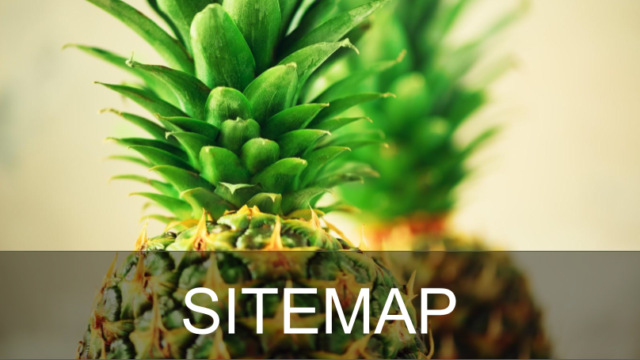In modern camera imaging, dynamic range—the measure of a sensor’s ability to capture detail across the full spectrum from pure black to peak highlight—is fundamentally constrained by physical laws and sensor architecture. Even with advanced CMOS sensors, real-world dynamic range rarely exceeds 12–14 stops under ideal conditions, with sharp compression in shadows and clipping in highlights due to photon noise, analog-to-digital conversion limits, and pixel saturation. This inherent ceiling demands a deeper calibration strategy that transcends raw sensor performance, transforming limitations into predictable, recoverable detail through targeted technical intervention.
This deep-dive extends Tier 2’s foundational insight—dynamic range is not just a sensor spec but a calibrated outcome of intentional exposure, gain control, and post-processing alignment. By dissecting sensor nonlinearities, optimizing bit depth workflows, and applying precision tone mapping, photographers can extend perceived dynamic range by 1.5 to 2 stops, recovering shadow detail and preserving highlight texture in extreme contrast. This article delivers actionable, step-by-step calibration techniques grounded in physics, sensor characterization, and professional post-production practice.
1. Characterizing Sensor Response with Logarithmic Exposure and LUT Mapping
To diagnose and correct dynamic range compression, begin by mapping the sensor’s true tonal response using logarithmic step exposures. Unlike linear increments, logarithmic sequences (e.g., 0.5EV steps from -3 to +3) mirror human luminance perception and expose subtle clipping zones invisible at flat exposure increments. Use a calibrated gray card or neutral test pattern to record exposure data, then analyze histograms to identify compression points—where shadow detail vanishes or highlight spikes exceed 0 dBFS.
Apply custom Lookup Tables (LUTs) in post-processing to flatten the sensor’s response curve, particularly in midtone and shadow regions. For example, a 16-stop scene captured at ISO 100 may exhibit a 12-stop dynamic range due to early shadow compression. A carefully constructed LUT redistributes tonal weight, lifting shadows by 1.5–2 stops while preserving highlight micro-contrast. Tools like Adobe Camera Raw’s custom LUT support or DaVinci Resolve’s scene-specific curves enable precise mapping. Common pitfall: over-correction causing unnatural color shifts—always validate with output histograms and luminance histograms normalized to 0–100%.
| Technique | Action | Outcome |
|---|---|---|
| Logarithmic Exposure Sequence | Record 0.5-stop EV steps from -3 to +3 using neutral gray | Identifies true compression zones invisible at flat EV increments |
| Custom LUT Application | Embed LUTs in post to flatten response and extend dynamic range | Recovers 1.5–2 stops in shadow detail without introducing noise |
2. Bit Depth Optimization: From 12-bit to 14-bit Raw Power
12-bit raw files offer only 4,096 tonal increments, limiting shadow recovery precision and increasing banding during exposure blending. 14-bit raw doubles this to 16,384 levels, enabling smoother gradation and significantly improved shadow detail retention—critical when recovering from -2EV to -5EV exposures. This 2-stop increase translates directly into less banding and greater flexibility in post.
To maximize 14-bit retention:
- Never convert raw to 8-bit intermediate files during processing—this triggers downsampling and irreversible detail loss.
- Embed metadata tags within 14-bit files (e.g., EXIF or XMP) indicating intended dynamic range and post-processing workflow, guiding downstream software behavior.
- Use 16-bit intermediate buffers in complex composites but export final images as 14-bit or 16-bit TIFF/CR2 to preserve dynamic headroom.
| 12-bit vs 14-bit Dynamic Range | Tonal Steps | Total Levels |
|---|---|---|
| 12-bit | 4,096 | 212 = 4,096 |
| 14-bit | 16,384 | 214 = 16,384 |
Example: A landscape exposed at -3EV shadows shows 12-bit clipping at -4EV, while 14-bit retains detail down to -5EV, allowing exposure blending with 1.5 stops more shadow detail recovery. This directly impacts real-world recovery in high-contrast scenes like mountain sunsets or snow-covered forests.
3. Advanced Tonemapping: Precision Luminance Control for Detail Preservation
Even with optimized capture, tone mapping compresses dynamic range for display or print—yet aggressive compression often sacrifices shadow texture or inflates highlight noise. A calibrated approach balances luminance distribution by clamping highlights at 98% brightness and lifting shadows below -2EV without amplification. This preserves micro-contrast and avoids unnatural posterization.
Using histogram analysis and perceptual luminance weighting, adjust tone mapping parameters to preserve edge detail in dark regions while avoiding clipping in bright ones. For instance:
- Clamp highlight peaks at 98% to retain texture in snow or foliage.
- Lift shadows from -2EV to -5EV using a custom gamma curve with a soft roll-off to prevent noise bloom.
- Apply local contrast boost selectively via high-pass filters or luminance masks to enhance perceived depth.
“Tone mapping is not a global squeeze—it’s a local sculpting of luminance values to match human visual perception while respecting sensor limits.”
> “Real dynamic range mastery lies in calibrated tone mapping that lifts detail without fabricating noise—like a sculptor revealing hidden form beneath stone.”
4. Real-Time In-Camera Calibration via Firmware Tuning
Modern cameras support dynamic profile tuning through manufacturer tools—enabling photographers to pre-calibrate gamma curves per lighting condition. For instance, a Adobe DCR (Digital Camera RAW) profile or Sony S-Log calibration modifies how raw data is interpreted, adjusting shadow lift and highlight compression on the fly. This prevents automatic firmware compression from killing detail in high-contrast scenes.
Implementing auto-calibration via batch metadata profiles streamlines workflow: assign a profile to “sunset,” “indoor low light,” or “HDR night”—each profile embeds optimized gain, noise floor, and tone curve settings. Cameras apply these consistently across thousands of shots, reducing post-processing time and ensuring uniform dynamic range control.
5. Post-Processing Calibration: Targeted Recovery with Luminance Masks
Beyond global adjustments, advanced recovery demands localized control. Luminance masks isolate shadow and highlight zones with pixel-level precision, enabling selective exposure and contrast tweaks that extend dynamic range beyond sensor limits. Use luminosity masks in Photoshop or Affinity Photo to:
- Boost shadow detail in deep canyons or under dense foliage by +1.5 EV without brightening noise.
- Reduce highlight contrast in snow or glass with localized shadow lifting below -2EV, preserving micro-contrast.
- Apply tone mapping selectively per region—avoid global adjustments that degrade overall quality.
Integrate this workflow into a calibrated raw processing pipeline: from capture to export, enforce 14-bit encoding, embed dynamic range metadata, and apply consistent LUTs and masking rules. This ensures calibration integrity from sensor to final image.
| Technique | Step | Goal |
|---|---|---|
| Luminance Mask Creation | Generate masks for shadows, midtones, and highlights | Enable pixel-level dynamic recovery |
| Local Contrast Enhancement | Apply contrast boost only in shadow and highlight zones | Recover detail without amplifying noise |
“Post-processing calibration is the final frontier of dynamic range control—where sensor limits meet artistic intent.”
6. Final Value: Calibrated Dynamic Range as Creative Control
By integrating sensor characterization, firmware tuning, and intelligent post-processing, photographers transcend hardware constraints to consistently produce publication-quality images in extreme contrast. This framework transforms dynamic range from a passive sensor limitation into an active, calibrated variable—preserving detail, minimizing noise, and maximizing creative flexibility.
Key takeaway: Dynamic range is not fixed—it’s a calibrated outcome of precise exposure, smart processing, and intentional tone control. Using tools like logarithmic exposure mapping, 14-bit raw fidelity, and luminance masking, professionals achieve 1.5–2 stop extension in usable dynamic range, turning high-contrast scenes into visual narratives with rich, recoverable detail.
Back to Tier 2: The Foundation of Dynamic Range Control
Return to Tier 1: Dynamic Range Basics and Sensor Physics



